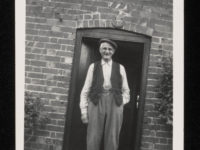Dialects are unique sets of sounds, words, phrases, and grammatical structures that combine to make up our distinctive ways of speaking. English varies in these different ways from country to country, county to county, and even village to village. Let’s take a closer look at each one of the components or ‘ingredients’ of a dialect.
Pronunciation
Pronounciation is all about sound – in other words, accent. This is the po-TAY-to/po-TAH-to bit (although no one actually says po-TAH-to!). For example, the words foot and cut may or may not rhyme with each other for you. How you pronounce them depends on where you’re from.
Vocabulary
Vocabulary Dialects have distinct vocabularies, that is, different words for the same thing. If you come from the south-east of England, for example, your word for skipping school might be bunking – or perhaps skiving, especially if you’re a Londoner. If you’re from Bickerstaffe in West Lancashire it’s playing hookey, but travel just four miles to the north in Ormskirk and you’re playing twag! Meanwhile, over in Newcastle it’s playing the nick.
We usually learn these words and phrases early in life, and associate them with the places where we grew up and the people closest to us. This explains the strong sense of local identity and pride that comes hand-in-hand with dialect.


‘SED Word Map: Freckles. Word maps show how dialect words are spread geographically, for example these many different words for freckles found by fieldworkers for the Survey of English Dialects.
’ (LAVC/PHO/S067)



